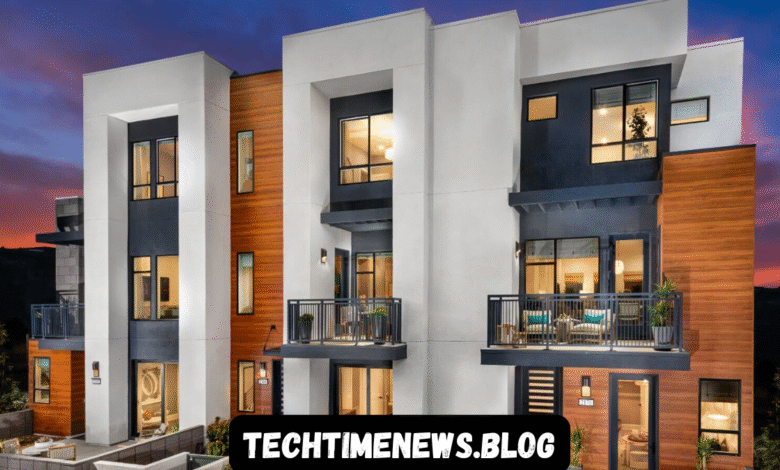
Introduction to Brookfield Residential and the Pandemic Context
Brookfield Residential Coronavirus is a prominent North American real estate developer known for building master planned communities residential homes, and mixed-use developments. Its operations span across the United States and Canada, with a focus on delivering high-quality housing solutions that meet the evolving needs of communities. When the coronavirus pandemic emerged in early 2020, it caused a profound disruption to industries worldwide, and the real estate sector was no exception. Brookfield Residential, like many other companies in its industry, faced a series of challenges that required rapid adaptation and strategic planning.
The pandemic created a unique and unprecedented environment in which homebuilders had to navigate public health restrictions, shifting consumer preferences, supply chain disruptions, and economic uncertainty. Understanding the impact of the coronavirus on Brookfield Residential requires looking at both the internal measures the company implemented and the broader real estate trends that shaped its operations during this time.
Early Challenges in the Wake of the Coronavirus Outbreak
When COVID-19 first began to spread, governments implemented strict lockdowns to prevent further transmission. These lockdowns had a direct effect on construction activity, delaying ongoing projects and halting new developments. For Brookfield Residential, this meant reassessing timelines for housing projects and re-evaluating financial forecasts. The health and safety of employees, contractors, and customers became the top priority, and the company Brookfield Residential Coronavirus quickly developed protocols to comply with public health guidelines.
One of the earliest challenges was managing construction sites under new social distancing requirements. Fewer workers could be present on-site at the same time, which slowed down the pace of building. In addition, global supply chains for materials such as lumber, appliances, and fixtures experienced severe disruptions. Delays in material deliveries led to longer project completion times, impacting sales schedules and revenue projections.
Implementing Health and Safety Measures
To address the risks posed by the coronavirus, Brookfield Residential implemented comprehensive health and safety measures. This included providing personal protective equipment to workers, increasing sanitation efforts on construction sites, and staggering shifts to minimize close contact among employees. In the company’s offices, remote work policies were introduced, with digital collaboration tools enabling teams to continue operations without physical meetings.
For homebuyers visiting sales centers or model homes, Brookfield Residential developed protocols that limited the number of visitors at any given time, required masks, and offered virtual tours as an alternative. These measures not only complied with legal requirements but also reassured potential buyers that their safety was being prioritized.
Shifting Consumer Preferences During the Pandemic
One of the notable effects of the coronavirus pandemic on the housing market was a shift in consumer preferences. Remote work became a permanent or semi-permanent arrangement for many professionals, leading to increased demand for homes with dedicated office spaces, larger yards, and flexible layouts. Brookfield Residential responded to this shift by highlighting features in their homes that accommodated work-from-home lifestyles, such as multipurpose rooms, high-speed internet infrastructure, and open-concept designs.
Buyers also began placing greater value on suburban and exurban communities, where larger homes and open spaces were more accessible. Brookfield Residential’s master-planned communities, which often included parks, walking trails, and recreational facilities, aligned well with these emerging priorities. This allowed the company to appeal to a growing segment of buyers seeking comfort, privacy, and community amenities.
Digital Transformation in Sales and Marketing
The restrictions on in-person interactions during the pandemic accelerated the adoption of digital tools across many industries, including real estate. Brookfield Residential embraced this shift by enhancing its digital sales and marketing strategies. Virtual home tours, interactive floor plans, video consultations, and online purchasing tools became central to the sales process.
These digital solutions not only addressed the immediate challenge of maintaining sales activity during lockdowns but also positioned the company to serve tech-savvy buyers who valued convenience. The ability to view homes, explore communities, and complete transactions online expanded Brookfield Residential’s reach beyond traditional geographical limitations.
Financial Impacts and Recovery Efforts
Like many companies, Brookfield Residential experienced financial pressures in the early stages of the pandemic. Delayed projects, reduced in-person sales activity, and market uncertainty affected revenue streams. However, as the housing market began to recover in mid-to-late 2020—driven by low interest rates, pent-up demand, and changing lifestyle preferences—the company saw opportunities for growth.
The recovery phase required careful balancing of investment in new developments with cautious risk management. Brookfield Residential maintained a focus on communities with strong long-term demand potential, while also adapting designs and marketing strategies to match post-pandemic buyer priorities.
The Role of Government Policies and Economic Factors
Government policies during the pandemic played a crucial role in shaping the real estate landscape. Low interest rates, mortgage deferrals, and various economic stimulus measures supported homebuyer activity even amid uncertainty. Brookfield Residential benefited from these market conditions, as more buyers were able to enter the housing market or upgrade to larger homes.
However, the company also had to navigate challenges such as regional differences in restrictions, varying timelines for reopening, and shifting local regulations. In some markets, demand surged quickly, while others experienced prolonged slowdowns. This required a flexible operational approach, with localized strategies tailored to the unique conditions of each community.
Supply Chain Disruptions and Cost Pressures
One of the most persistent challenges during the pandemic was the disruption of supply chains. Key construction materials like lumber, steel, and concrete became more expensive and harder to obtain. This placed upward pressure on building costs, forcing Brookfield Residential to consider adjustments in pricing, project timelines, and supplier relationships.
The volatility in materials pricing also had an impact on affordability for buyers. While low interest rates initially offset some of these costs, sustained increases in construction expenses posed longer-term risks. Brookfield Residential worked to mitigate these effects through strategic sourcing, maintaining strong relationships with suppliers, and exploring alternative materials where possible.
Community Engagement During the Pandemic
Beyond its business operations, Brookfield Residential placed emphasis on supporting the communities in which it operates during the pandemic. This included initiatives to assist local businesses, provide resources for residents, and create safe, socially distanced community events. In master-planned neighborhoods, the company supported virtual community gatherings, wellness programs, and online educational activities.
These efforts not only reinforced Brookfield Residential’s brand reputation but also strengthened the sense of connection among residents during a period of social isolation. In a time when community support was vital, the company demonstrated its commitment to the well-being of homeowners and local partners.
Lessons Learned from the Pandemic
The coronavirus pandemic served as a major test of resilience for Brookfield Residential. Key lessons learned included the importance of agility in business operations, the value of digital transformation, and the need for robust contingency planning. The company’s ability to adapt quickly to shifting market conditions, consumer behaviors, and regulatory environments proved critical to sustaining operations and positioning for recovery.
The pandemic also highlighted the enduring demand for housing that meets both practical and emotional needs. Buyers sought homes that were not only functional but also offered comfort, safety, and opportunities for connection—a demand that Brookfield Residential was well-positioned to meet through its diverse portfolio of communities.
Long-Term Outlook for Brookfield Residential Post-Coronavirus
As the world moves beyond the most acute phases of the pandemic, Brookfield Residential continues to build on the changes it implemented during that time. Virtual tools, flexible home designs, and health-conscious community planning are likely to remain integral to its strategy. The experience has reinforced the need to be proactive in anticipating shifts in consumer behavior and market conditions.
Looking forward, the company is positioned to benefit from ongoing trends such as remote work, suburban migration, and the desire for integrated community amenities. While challenges remain—including potential economic fluctuations and ongoing supply chain Brookfield Residential Coronavirus adaptability demonstrated during the coronavirus crisis suggests a strong capacity for future growth.
Conclusion
The impact of the coronavirus pandemic on Brookfield Residential was multifaceted, touching nearly every aspect of its operations—from construction and sales to community engagement and corporate strategy. Through swift adaptation, a focus on health and safety, and the embrace of digital innovation, the company navigated an unprecedented period of disruption. As a result, Brookfield Residential not only weathered the immediate challenges but also emerged with a stronger foundation for future success. The lessons learned during this period will likely continue to shape its approach to development, customer engagement, and market positioning for years to come.



